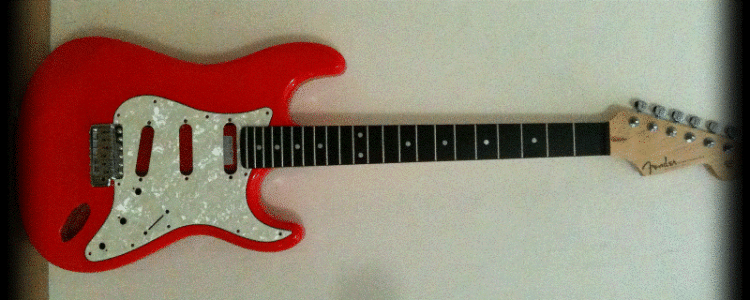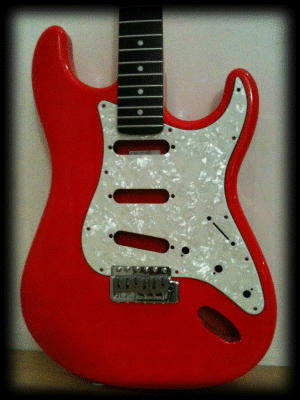Hi Friends :blob7:
Working on my second Stratocaster project.
Im having some issue on the guitar body. The problem arises while im adjusting the saddle on my 6 hole vintage Bridge, The saddle already reach the maximum height but still the string touches the fretboard and I dont have anymore room to adjust. I spoke to my friends and they told me the body might not have enough depth on the neck pocket, and they advise me to deepen more the depth about 3mm..
So measured carefully the dimension of the following parts but seems to be OK....My guts tells me to deepen the neck pocket about 3mm.
1. Neck Thickness = 1" (25.4mm)
2. Neck depth pocket = .625 (15.88mm)
I search from the forum that the immediate solution is to deepen the neck pocket about 0.125" (3mm) then this issue will be solve.
Can anybody advise me what to do...thanks alot
Working on my second Stratocaster project.
Im having some issue on the guitar body. The problem arises while im adjusting the saddle on my 6 hole vintage Bridge, The saddle already reach the maximum height but still the string touches the fretboard and I dont have anymore room to adjust. I spoke to my friends and they told me the body might not have enough depth on the neck pocket, and they advise me to deepen more the depth about 3mm..
So measured carefully the dimension of the following parts but seems to be OK....My guts tells me to deepen the neck pocket about 3mm.
1. Neck Thickness = 1" (25.4mm)
2. Neck depth pocket = .625 (15.88mm)
I search from the forum that the immediate solution is to deepen the neck pocket about 0.125" (3mm) then this issue will be solve.
Can anybody advise me what to do...thanks alot






